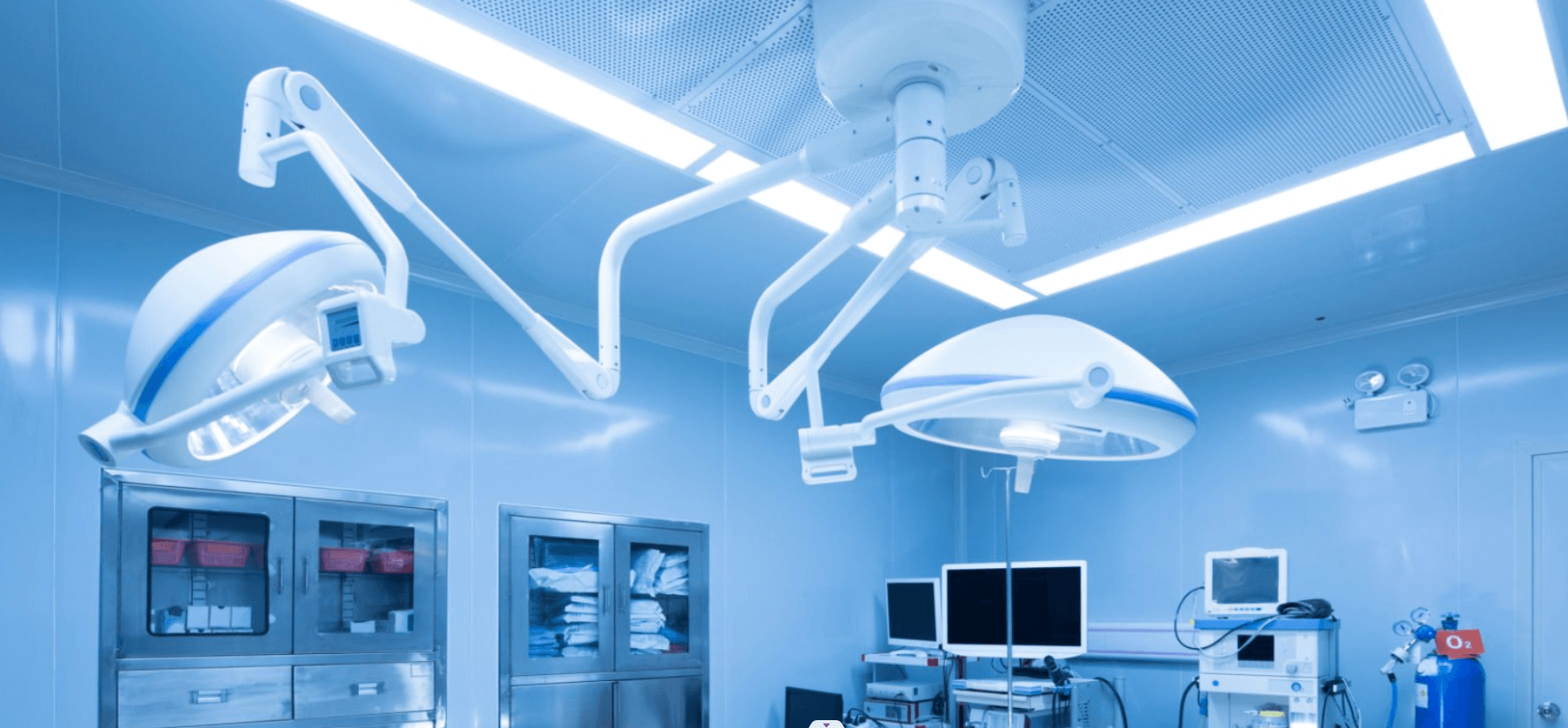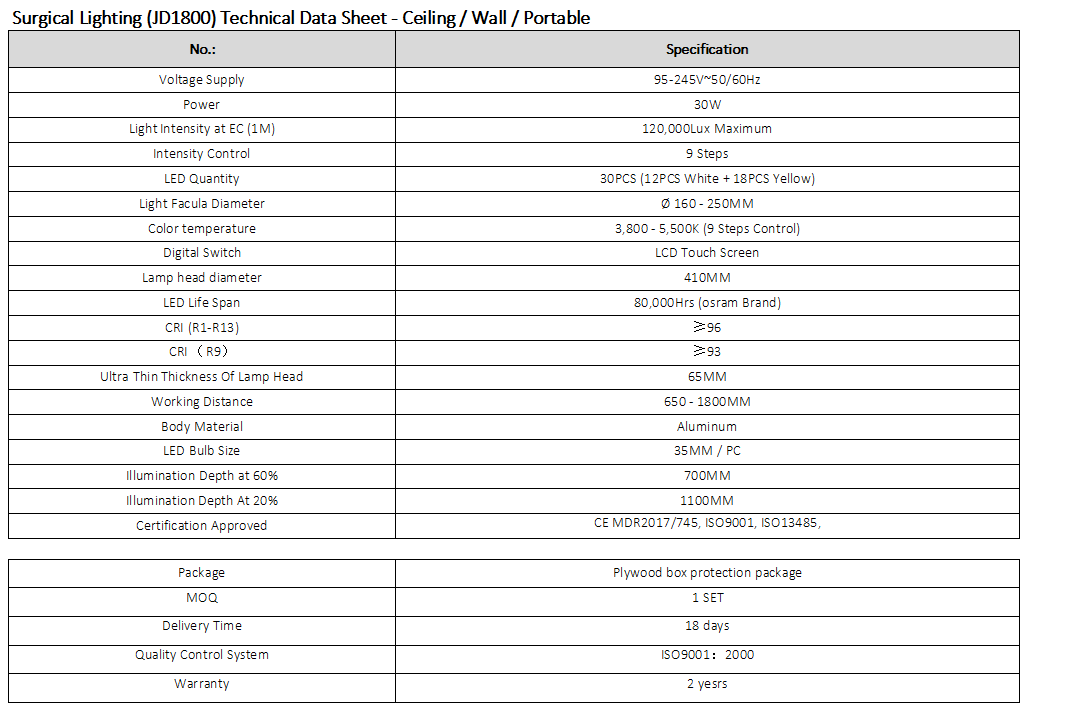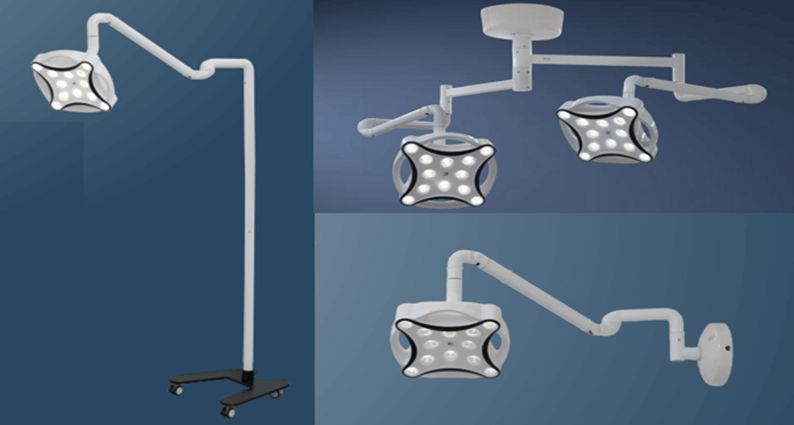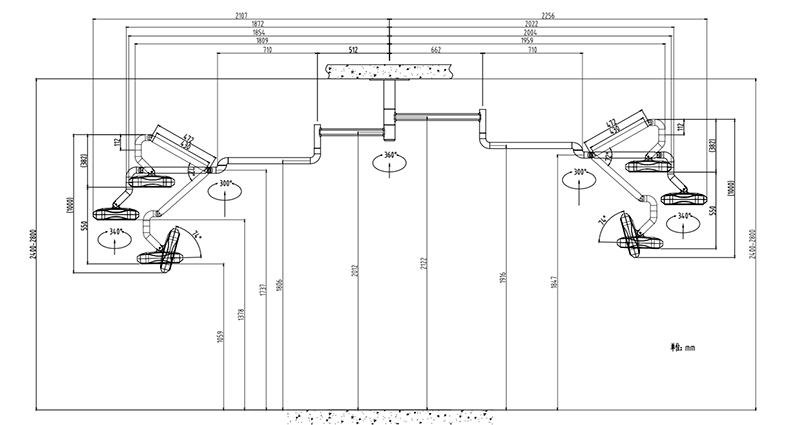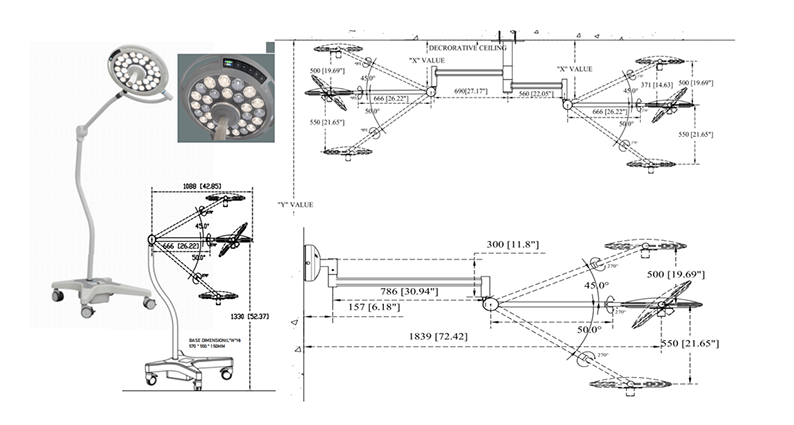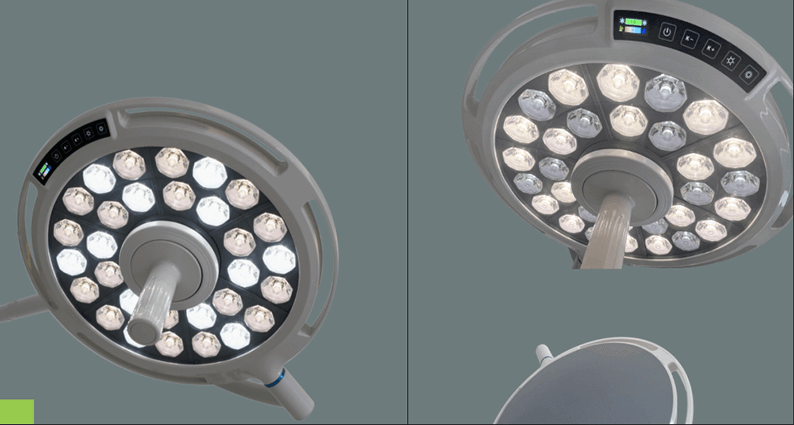| Accessories / Surgical Lighting
Surgical lighting is complex, sophisticated, and often customized for an OR. It is important to surgeons, proceduralists and the perioperative team in providing optimal visualization during procedures. Choosing the right surgical lighting is critical for optimum patient safety and staff comfort.
Quality lighting is vital for every OR; the method of lighting depends on the staff and patient needs. Three of the most common methods are:
1, Overhead/operating lights
2, Headlights/illuminated loupes
3, In-cavity lighting
However, more light does not correlate with improved visual acuity. Research has shown that quality of light — not quantity — matters most in the operating room (OR). Factors that contribute to high-quality surgical lighting as following: Illumination, light patch diameter, volume of light, shadow management, color temperature, heat management and safety. Particular to the shadows and glare are dangerous in a surgical environment and must be avoided at all costs.
Application
Application
▪ ICU Rooms
▪ Operating room
▪ Procedure and Exam Rooms
▪ ED / Trauma Departments
▪ Cosmetic Surgery Center
▪ Dental Surgery
Benefit & Advantage
Benefit and Advantage
▪ Brighter Hues
▪ Produces Less Heat
▪ Saving Energy
▪ Improved Shadow
▪ Accurate Color Rendition
▪ Long lifespan
Spec Details
Specification & Parameter
▪ Color Temperature: 3,000°-6,700° Kelvin
▪ CRI: 85-100 (Ra)
▪ Voltage: 95-245V
▪ Power: 60w / 30W
▪ Bulb life: 50,000.0 hrs
▪ Certificated: CE, FDA, EN 60601-2-41, MDR2017/745
